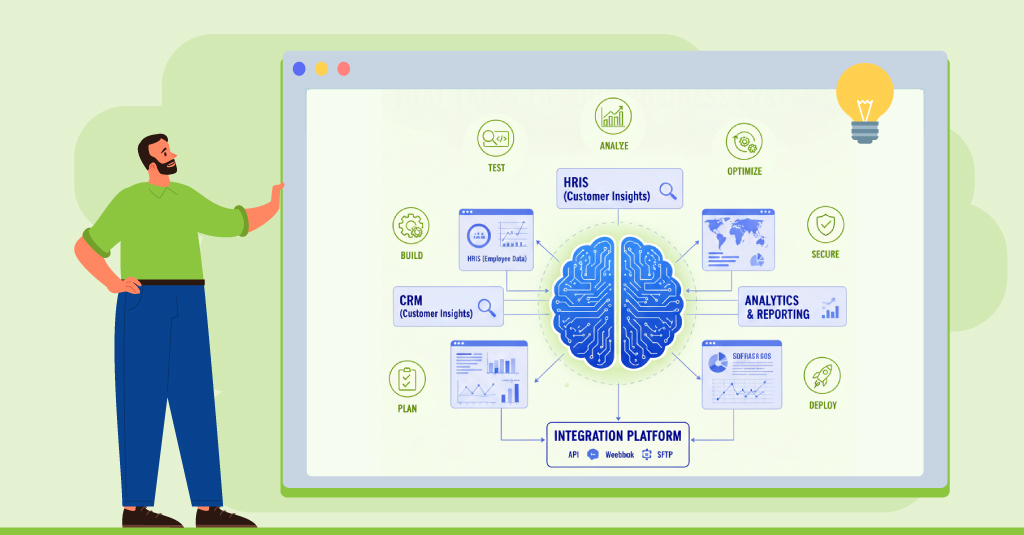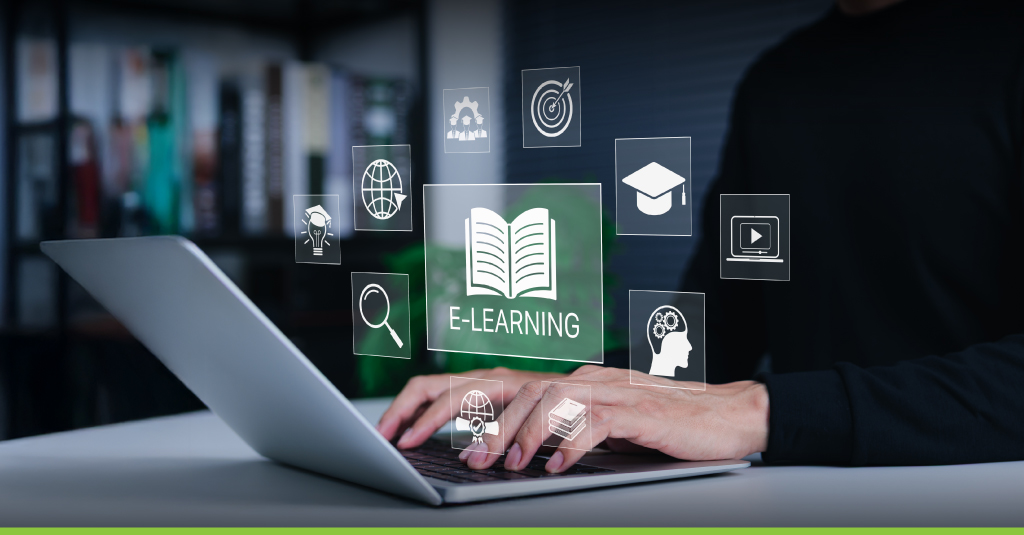It’s an innocuous and seemingly simple question – yet in reality it is probably one of the hardest to answer, says Alan Samuel.
Try to make a list of everything you learned today. It’s probably easier to list the things you set out to learn; e.g. “I need to learn how to change a light bulb (without the 15 people who usually help me!).
But what about all those other bits and pieces of information we assimilate through the day but don’t necessarily think of, or label, as learning? The knowledge, information and skills that we don’t always recognise or catalogue as conscious learning but magically appears every time we need it, from that wonderful repository of a lifetime of learning – the brain! How? Why? Because we live and learn! We wander through life like a Google street mapping car with a 360° camera on its roof, collecting, cataloguing, and filing away a million pieces of learning every step of the way, every day.
Learning surrounds us. It is everywhere. It’s in everything we do and is therefore inescapable and inevitable. We labelled it in previous articles as ‘pervasive learning’ and to this phenomenon we added ‘pervasive technology’ which is arguably the greatest enabler of the process of continuous learning.
Q: So, if this is the world we live in, what does it mean to us in the learning business? A: It means we need to stimulate and enrich our working environment with learning opportunities. It means we need to harness and use every form and facet of our environment to provide these opportunities. And it means we need to use the enablers (of technology) to be ‘enablers’ too!
So, before we go back to the question “What did you learn today?” and start scribbling lists of what we did learn, pause to consider some of the other questions that will influence the answer to the BIG question.
“It is as important to recognise that we have learnt, as it is to learn, so ‘what did you learn today?’ then becomes our mission statement to keep learning.”
…WHY DID WE LEARN TODAY? What were the drivers and the motivators to learn? Was it because we had to? Were we told to? Did we think it would be useful? Would it make our lives/jobs easier? Was it our decision? Was it a conscious decision?
In the context of Conrad Gottfredson’s ‘Five Moments of Need’, it is most likely that it was one of those moments that provided the motivation to learn. But, does this apply to ‘unconscious’ or ‘accidental’ learning? The learning we capture as we saunter through life every day? Probably not. Does it matter? Not really, because you don’t exercise any control over it and it’s all being stored away for when you need it. And you won’t remember how, when and where you learnt it. It is therefore, hugely important that we understand the drivers and motivators of our learners, to enable us to build a relevant, stimulating environment and the tools to help realise their ambitions – and in doing so, lift organisational levels of achievement and productivity.
HOW DID YOU LEARN TODAY?
This is the one for us learning folk. Because this is where we roll up our sleeves and get into the nuts and bolts of putting the learning jigsaw puzzle together. This is where we have to cover all the bases to make sure we provide and facilitate learning and equip our people with the tools that will help them ‘keep learning’. So stop! Consider your day so far, how DID you learn? And what did you use to help you learn?
To help us answer the question, let’s briefly consider the human, physiological enablers of learning, without which none of this would even begin to happen – the senses!
Creator of the Nonna and Me DVD series for pre-school children, Sandi Zobrest, in her blog on The Five Senses: Learning about our world, says, “Without thinking about it, we use our senses all day long, to gather information about the things around us. The senses of sight, smell, touch, taste and hearing are the five main ways that people and animals take in information.”
American educationalist Edgar Dale’s Cone of Experience, is widely used in education and learning communities as a great illustration of just how learning increases when you involve multiple senses and multi-media. It supports what the 70:20:10 model and all the other theories that tell us that the majority of learning happens outside the classroom and formal learning, as we know it.
To bring this back to the question of ‘how?’ it is evident that learning (outside the formal) through experience, discussion and anecdotal, observation and practice and hugely through mistakes (though very often you wouldn’t think so!) are still the most common forms of learning. So what has changed? The vehicles have changed.
While the forms remain the same, ‘all pervasive’ technology has forever changed almost every way we access and acquire information and learning. The separation of learning and technology has narrowed and blurred to a point, where technology has become almost an extension of our senses. In his review of Itiel Dror’s book on Cognitive Technologies and the Pragmatics of Cognition, professor Stephen M Kosslyn, Head of Psychology, Harvard University, says: “Technology can no longer be considered simply a product of human endeavour or a subject of study, but must be understood as providing a context within which we live and function”.
It is in this context that we live and work, where technology extends and enlarges our sphere of influence, cocooning us in a web of learning and technology where even the hallowed form of the printed word is now in a thin, flat device that can store almost as many books as the local library.
For us and for our learners, technology is invariably the first port of call. It is only the access device that might change. Isn’t Google the single largest and most powerful LMS in the world? Isn’t the search engine our ‘go to’ place for anything and everything? So, the question is really about harnessing this power and making it available as a part of a pervasive learning environment that is a friendly, useful and attractive place for our learners.
I am not going to explore the ‘when and where did you learn today’ questions, because we have touched on the answers which simplistically are ‘all the time and everywhere’, though of course both are also related to the drivers of ‘context and point of need’.
Is ‘What did you learn today?’ a rhetorical question? It probably is. We cannot list everything we learnt today because there is so much we don’t know we’ve learnt, so aptly captured in the quote below.
Parent: “What did you learn today?”
Student: “Apparently not enough! We have to go back tomorrow!”
It is as important to recognize that we have learnt, as it is to learn, so ‘what did you learn today?’ then becomes our mission statement to keep learning. So, in our pervasive learning environment, surrounded by information, knowledge and skills, we know therefore that learning is indeed continuous and inescapable. We also know that technology helps us to find, access, understand, learn and apply this learning. But the keystone of success is ‘Us’: individuals, people, employees, children, students, workers. We need the motivation and the curiosity to engage with our environment, to absorb this learning, to appreciate and leverage the power and richness of knowledge that is so easily available through the benefits of other people’s learning, experience and mistakes, to celebrate in the discovery of the new and pass on the benefits of our own learning.
But let’s move this to something tangible, something we can act on. As learning professionals, we have the unique opportunity of putting this learning jigsaw puzzle together, identifying the pieces, seeing how they fit with each other and building that final picture.
Let’s examine the learning environments we have. Are they truly pervasive? Are we allowing our technology to be pervasive? Are we capturing the organisation’s learning in our materials, the eLearning, the PowerPoint’s and workbooks? And let’s look at how we deliver this? Is our LMS the ‘go to’ place for learning in the company? Is it as easy to learn from, as our environments are? Are we surrounding our people with opportunities to learn? And allowing them to create their own learning environments?
Do they really learn, understand and use the material we so cleverly create and win awards for? Are we facilitating and enabling? Or are we just battering them into submission through assessment and compliance? Our role and mission in learning must be as catalysts, to create and build the Bodleian’s, the Louvre’s, the Smithsonian’s of learning for our people to wander through and immerse themselves in. But also to be the tour guides because in doing so we ensure that we keep on learning to keep on learning!

















